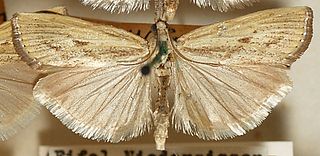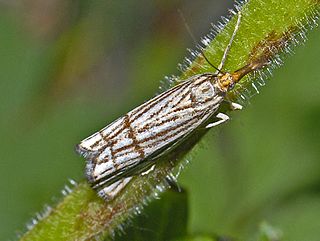
Eucinetidae is a family of beetles, notable for their large coxal plates that cover much of the first ventrite of the abdomen, sometimes called plate-thigh beetles. The family is small for beetles, with about 50 species in 11 genera, but are found worldwide.

The Global Biodiversity Information Facility (GBIF) is an international organisation that focuses on making scientific data on biodiversity available via the Internet using web services. The data are provided by many institutions from around the world; GBIF's information architecture makes these data accessible and searchable through a single portal. Data available through the GBIF portal are primarily distribution data on plants, animals, fungi, and microbes for the world, and scientific names data.

Chaoboridae, commonly known as phantom midges or glassworms, is a family of fairly common midges with a cosmopolitan distribution. They are closely related to the Corethrellidae and Chironomidae; the adults are differentiated through peculiarities in wing venation.

The Ochteridae comprise a small family of insects. Eight genera with about 80 species have been described. They occur worldwide along the shore of various types of water and the greatest diversity is in tropical regions. They are "true bugs", being members of the order Hemiptera, and are in the suborder Heteroptera. Ochteridae commonly are known as the velvety shore bugs. They resemble the Saldidae shore bugs and have lengths ranging from 4.5 to 9 mm (0.18–0.35 in).

Peripsocidae is a family of Psocodea belonging to the suborder Psocomorpha. Members of the family are characterised by their absence of an areola postica in their wings. Many of the recently described genera are closely allied to Peripsocus. The family includes more than 300 species.

Agriphila inquinatella is a small moth species of the family Crambidae. It is found in Europe, around the Caucasus area to Turkestan, and in the Near East to Jordan. The type locality is in Austria.

Chrysocrambus is a genus of moths of the family Crambidae described by Stanisław Błeszyński in 1957.

Chrysocrambus craterellus is a species of moth of the family Crambidae. It was first described by Giovanni Antonio Scopoli in his 1763 Entomologia Carniolica.

Equus conversidens, or the Mexican horse, is a dubious Pleistocene species of horse, now extinct, that inhabited North America.
Chrysocrambus dentuellus is a species of moth in the family Crambidae. It was described by Frank Nelson Pierce and John William Metcalfe in 1938 and is found in Portugal and Spain.

Chrysocrambus linetella is a species of moth in the family Crambidae.

Chrysocrambus sardiniellus is a species of moth in the family Crambidae. It is found in Spain and on Sardinia.
Chrysocrambus chrysonuchelloides is a moth in the family Crambidae. It was described by Rothschild in 1925. It is found in Morocco.
Chrysocrambus kobelti is a moth in the family Crambidae. It was described by Saalmüller in 1885. It is found in North Africa, including Algeria and Morocco.
Chrysocrambus lambessellus is a moth in the family Crambidae. It was described by Aristide Caradja in 1910. It is found in North Africa, where it has been recorded from Algeria.
Chrysocrambus major is a moth in the family Crambidae. It was described by Johann Müller-Rutz in 1931. It is found in North Africa, where it has been recorded from Algeria.
Chrysocrambus mauretanicus is a moth in the family Crambidae. It was described by Johann Müller-Rutz in 1931. It is found in North Africa, where it has been recorded from Algeria.
Chrysocrambus similimellus is a moth in the family Crambidae. It was described by Johann Müller-Rutz in 1931. It is found in North Africa, where it has been recorded from Algeria and Tunisia.
Chrysocrambus syriellus is a moth in the family Crambidae. It was described by Hans Zerny in 1934. It is found in Turkey, Lebanon, Syria, Iraq and Afghanistan.

Kinnaridae is a family of fulgoroid planthoppers. This is a small family with a little more than 20 genera and about a 100 species. The family was erected by Muir in 1925 and most members are found in the Oriental and Neotropical regions and only a few in the Nearctic and Palaearctic regions.









